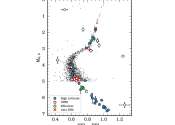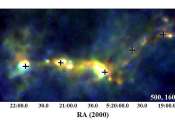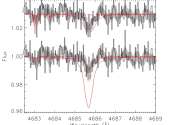Recently discovered black hole is part of a nearby disrupted star cluster, study finds
European astronomers have investigated a recently detected black hole designated Gaia BH3. In their results, they found that the black hole is associated with a nearby disrupted star cluster known as ED-2. The finding is ...









